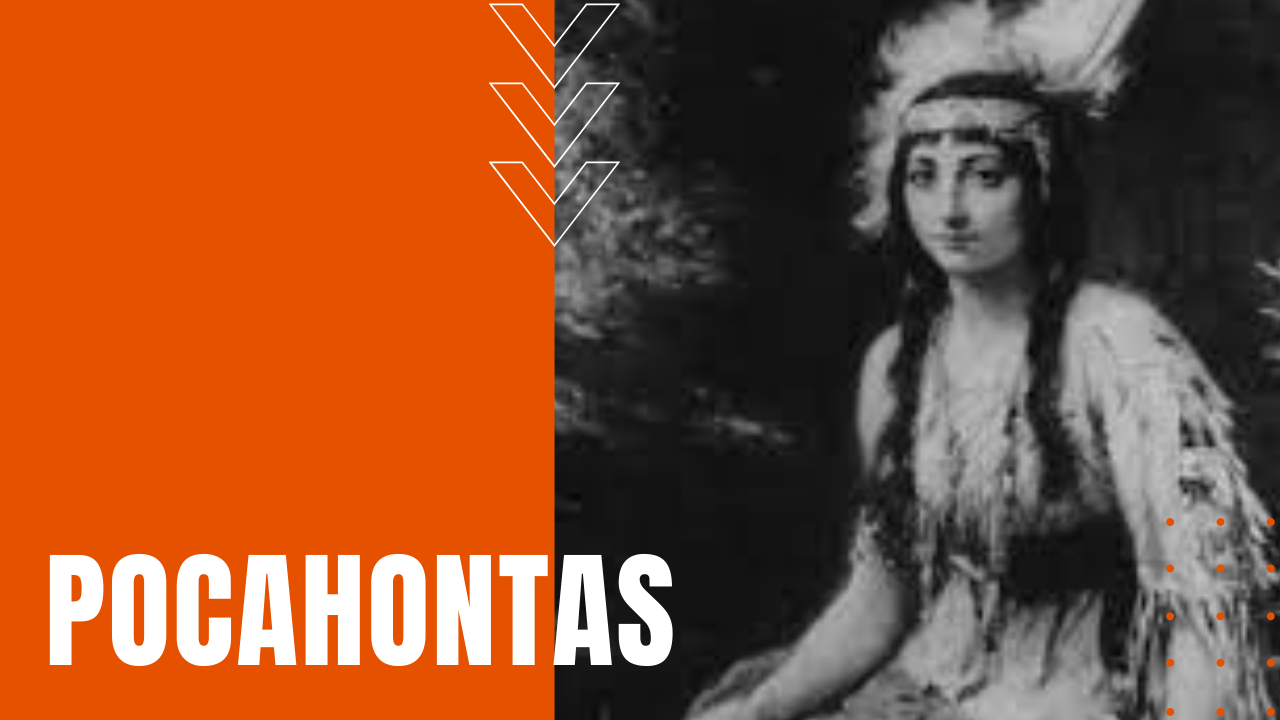Pocahontas: History, Myth and Legend

Made a household name through a mix of truths, myths and legends, Pocahontas was born near the Tidewater region of Virginia, sometime around 1596. Named Amonute by her parents and Matoaka by some of her friends, she was given the nickname Pocahontas as she grew older, which translates to “playful one” or “ill-behaved child.”
The favorite daughter of Chief Powhatan, the powerful head of 30 Algonquian-speaking tribes in and around the early English settlement at Jamestown.
Pocahontas and John Smith
English adventurer John Smith recalled that the beautiful princess saved him from execution by her father, thereby turning her back on her own people in support of the English—a legend which has endured for centuries symbolizing a common peace between the cultures of both the invaders and the invaded. After violence broke out during the First Anglo-Powhatan War, English settlers hoodwinked Pocahontas into boarding an English ship, where she was held for ransom in exchange for colonial prisoners held by her father.
Who Did Pocahontas Marry?
Imprisoned at Henricus in Chesterfield County, Virginia for more than a year, Pocahontas met widower John Rolfe, whose English-born wife and child had died in a shipwreck off of Bermuda. Rolfe took Pocahontas to be his bride, who in turn accepted the Christian faith and was given the baptismal name of Rebecca.
Their marriage on April 5th, 1614, brought about an eight-year climate of peace between the Jamestown settlers and Powhatan’s tribes, which became known as the “Peace of Pocahontas.” In 1616, the Rolfes traveled to London with their one-year-old son, where the young princess was presented to English society and billed by promoters as a “civilized savage,” who in turn hoped to raise additional funding for the colonial settlement at Jamestown by parading the beautiful princess in the latest Parisienne fashions of the day.
Made an instant celebrity within British high society, Pocahontas attended a masque at Whitehall Palace, before passing away at age 21 in 1717 at Gravesend of unknown causes. She was buried in St. George’s Church, Gravesend, England, although the exact location of her grave remains a mystery after the church was destroyed by fire.
Now that some 400 years have passed since her death, the true character of Pocahontas has been fleshed out by authors and historians, who paint a picture of an energetic youth who grew up to be a clever and brave young woman, serving as both a translator and representative for her Native American heritage before her colonial overlords in England.
The story that Pocahontas was deeply in love with John Smith lasted for generations after her death, slowly falling into obscurity before the legend of their love affair reignited after the Revolutionary War.
